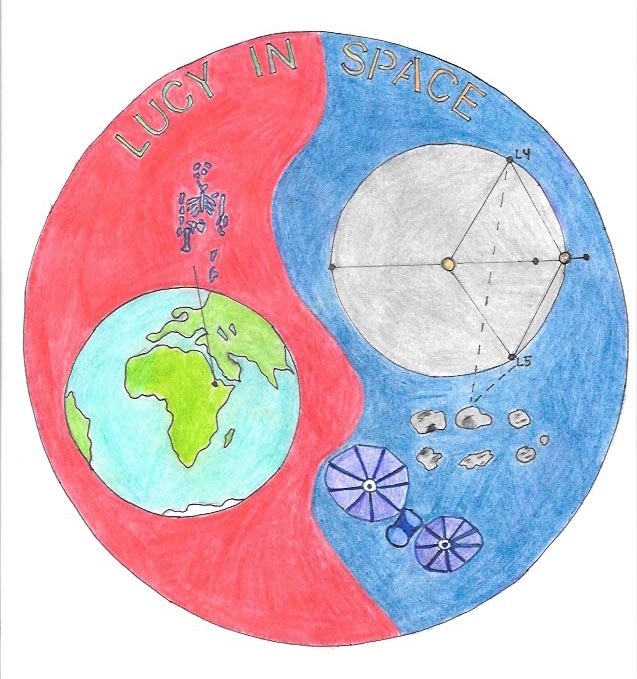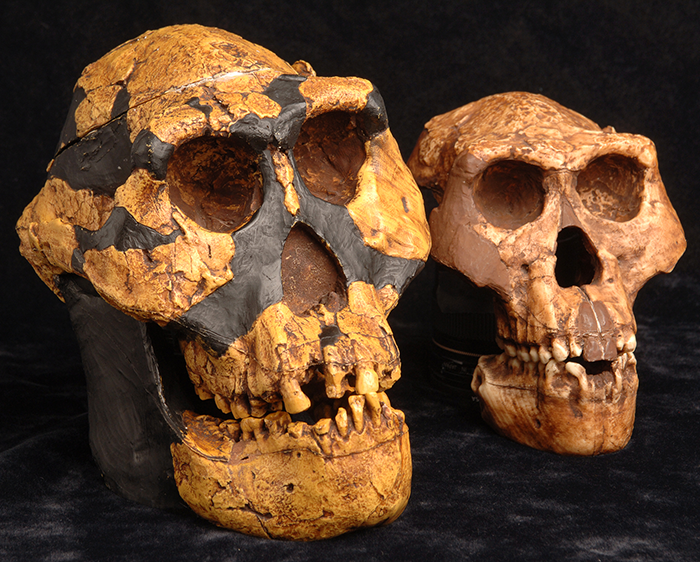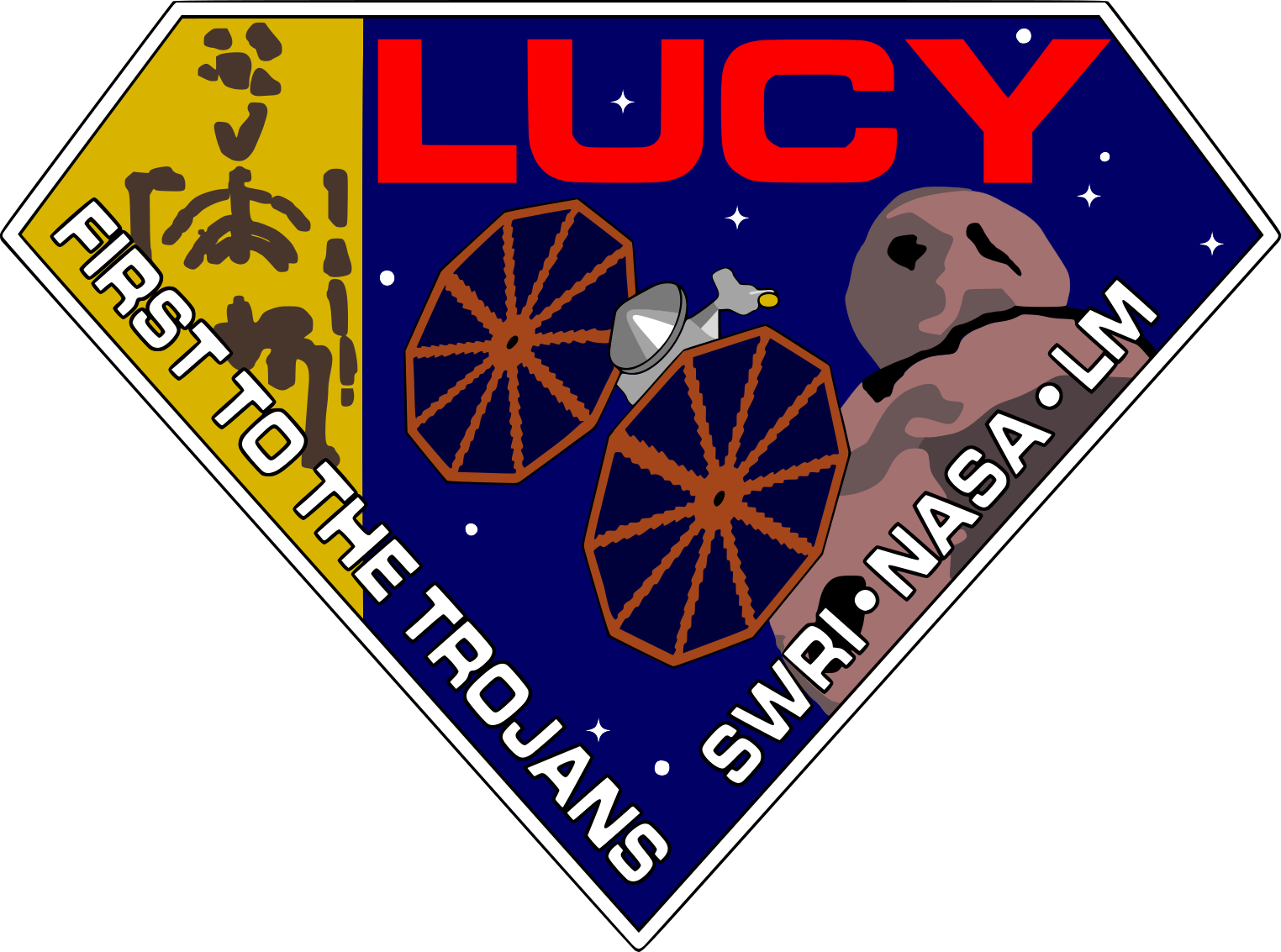
Middle School First Place Winner
Tim Topping, 8th Grade
St. Mary Catholic School, Littleton CO
My badge's design shows how the discovery of Lucy, a hominid, can be compared to the Lucy Mission's exploration of Trojan asteroids. The hominid, Lucy, helped scientists have a greater understanding of human evolution. Both Lucy and the Trojan asteroids contain preserved information about the past. In the first space study of Trojan asteroids, the Lucy Mission will examine these asteroids for insight into the solar system's development.

Tim Topping patch design
On the left side of the badge, Lucy's bones are drawn with a line to Ethiopia that is marked on a drawing of Earth. Lucy was discovered in Ethiopia in the 1970s. She was named after the song “Lucy in the Sky with Diamonds” that was playing during the celebration of her discovery. Lucy was instrumental in improving our knowledge of human evolution in that she learned to walk before stone tools or before brains became more complex. Finding Lucy was ground-breaking because she was the oldest and most complete skeleton ever discovered at the time. With her skeleton, archaeologists learned crucial information about human development and certain bones led scientists to discover hominids from 3.2 million years ago were walking upright with bipedalism.
On the right-hand side of the badge, there is a depiction of the asteroids and the Lucy Mission. The Lucy Mission's goal is to have a spacecraft gather information on Trojan Asteroids, which are the leftovers from when the planets were forming. These asteroids have valuable information about the other planets and have been contained in a stable orbit with Jupiter around the sun for potentially over four billion years.
In the first picture, the Lagrange points of Jupiter are depicted. Lagrange points exist around planets' orbits and allow the asteroids to exist in a stable state. Trojan asteroids are made of materials that formed the planets of the solar system. By studying the Trojan asteroids, scientists can learn more about gas planets and the solar system as a whole. For example, the binary system of two Trojan asteroids that orbit each other is from the time of the solar system formation. Below the Lagrange points image, I drew the Lucy spacecraft that will perform flybys of the Trojan asteroids. Its equipment will provide valuable information in studying these asteroids to understand the evolution of the solar system.
Next to the spacecraft is a drawing of the asteroids that Lucy will fly by. The Lucy Mission will study six different Trojan asteroids in L4 and L5 in addition to a test visit to a main-belt asteroid. By studying each asteroid, scientists will evaluate their diversity in size, color, and composition to find more information about the early solar system.
The Lucy Mission's goal to learn more about the early solar system by studying these “space fossils” will provide scientists with information about the evolution of the Solar System similar to studying the hominid of Lucy's fossil contributed to the study of human evolution.
Be Part of
Ask An Anthropologist
By volunteering, or simply sending us feedback on the site. Scientists, teachers, writers, illustrators, and translators are all important to the program. If you are interested in helping with the website we have a volunteers page to get the process started.



